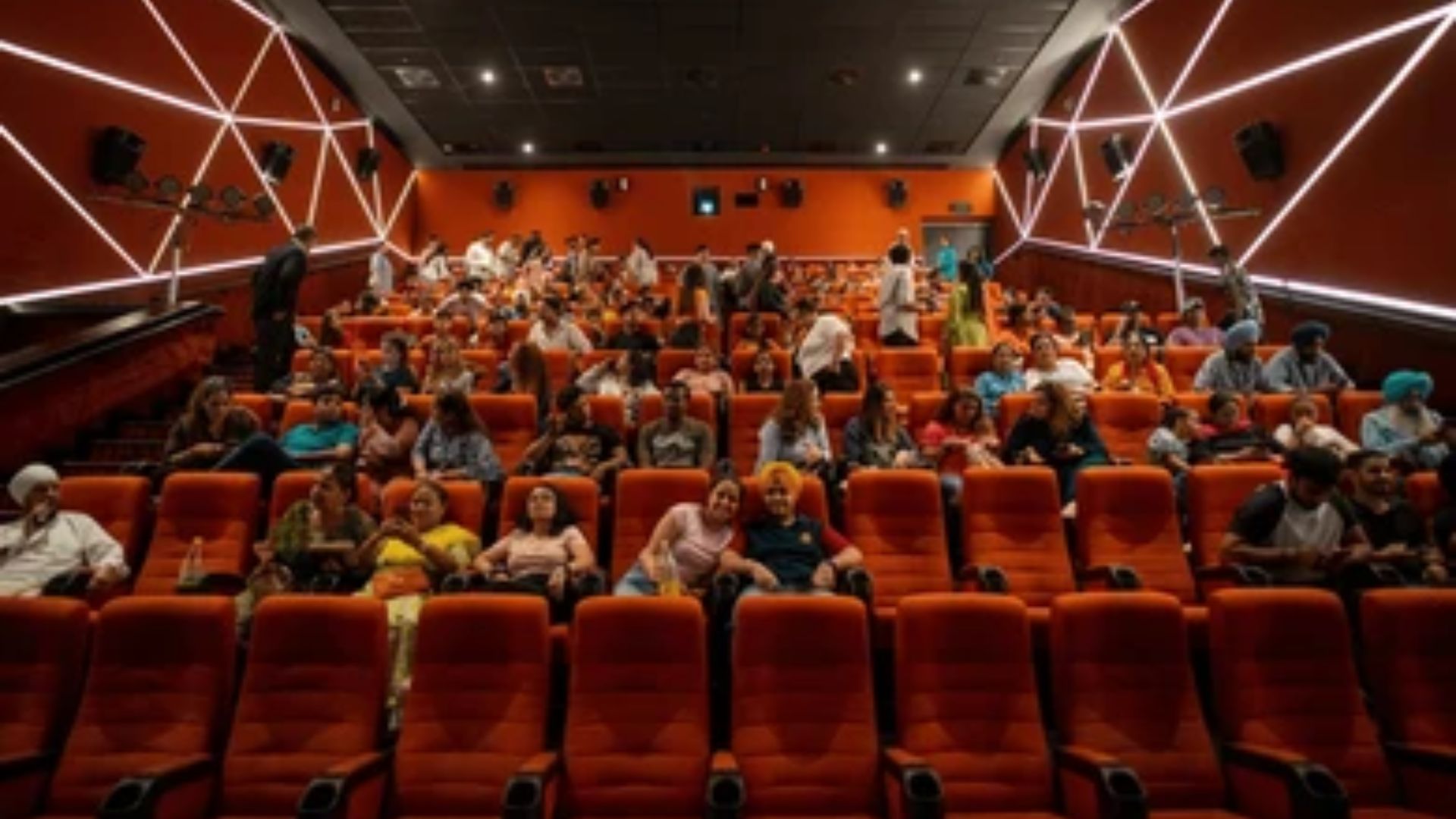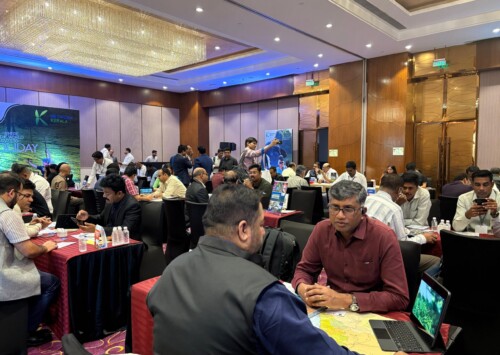Big screens, smaller crowds: New reality of Indian theatres
A shrinking habit in an expanding audience base

Even as Ormax Media reports that India’s theatrical universe grew to 157.4 million in 2023, a 29 pc increase over the previous year, the country’s cinema halls are seeing fewer repeat visitors and shuttering screens (Photo: Shutterstock)
Even as Ormax Media reports that India’s theatrical universe grew to 157.4 million in 2023, a 29 pc increase over the previous year, the country’s cinema halls are seeing fewer repeat visitors and shuttering screens. With rising costs, competition from booming streaming services and changing viewing habits, the industry now stands at a crossroads. As audiences become more selective and cinemas cater increasingly to ‘event films’, experts warn that without urgent recalibration, the big screen may fade from the everyday lives of Indian viewers.

Even as Ormax Media reports that India’s theatrical universe grew to 157.4 million in 2023, a 29 pc increase over the previous year, the country’s cinema halls are seeing fewer repeat visitors and shuttering screens (Photo: Shutterstock)
Back in 2009, 3 Idiots hit theatres with the now-iconic song All is Well echoing across packed cinema halls. Audiences, immersed in the story of three engineering students navigating pressure and purpose, laughed, cried, and cheered together. For many, it was a moment of collective escape, popcorn in hand, worries left at the door.
The numbers reflected the phenomenon. According to its producers, the film was watched by over 60 million people in just 19 days, grossing nearly USD 38 million. Producer Vidhu Vinod Chopra declared that 3 Idiots had broken all previous box office records, setting a benchmark for Bollywood success.
Fast forward to 2025, and the mood is far less celebratory. Veteran filmmaker Subhash Ghai, known for classics like Karz, Saudagar, and Khalnayak, recently posted a photo of an almost-empty theatre. His caption was pointed: “Why is Bollywood bleeding today? Because of the heavy cost to watch a film in cinema halls. Cinema lovers have stopped going to theatres to experience a collective movie-watching experience on the big screen.”
Ghai’s post struck a nerve, not just about ticket pricing, but about a deeper malaise affecting Indian cinema, on what really went wrong with the magic of going to the movies.
From Blockbusters to Bleak Seats
The decline in theatre attendance is no longer anecdotal, it has been unfolding steadily for years. According to Ormax Media’s 202, media and entertainment consulting firm, reports that footfalls at movie theatres dropped by 6 pc in the last year alone, from 943 million in 2023 to 883 million. This marks the third consecutive year of decline from pre-pandemic levels.
Meanwhile, the infrastructure is also shrinking. Despite being the world’s most populous country, India has only around 9,000 cinema screens, a mere 7–8 screens per million people. A key driver of this crisis is the continued shutdown of single-screen theatres, especially outside the southern states.
“Most single screens outside southern India have shut down. With ticket prices between INR 60 to INR 180, they were affordable for the masses. Multiplexes are too expensive, as prices for tickets and food turn movies into a luxury. Families now go only if a film really excites them,”,” film trade analyst Sumit Kadel tells Media India Group.
Cost of going to the movies
This frustration over pricing is echoed in public sentiment. In 2023, Noida resident Tridip K Mandal shared a viral post after a trip to the movies. Shocked by the concession prices, he tweeted: “INR 460 for 55 gm of cheese popcorn, INR 360 for 600 ml of Pepsi. Total INR 820 at @_PVRCinemas Noida. That is almost equal to the annual subscription of @PrimeVideoIN.”
His tweet triggered a cascade of similar reactions online. “Totally! Went to PVR yesterday. A regular popcorn and Pepsi combo was 600 something,” one user posted. Another summed it up: “Capitalism at its finest.”
The backlash has even prompted policy responses. Karnataka Chief Minister Siddaramaiah announced a ticket price cap of INR 200. But enforcement remains patchy, with cities like Bengaluru continuing to see ticket prices soar well above the ceiling during opening weekends.
Streaming services: The new front row
While theatre footfalls dwindle, digital platforms are booming. India’s Over The Top (OTT) audience hit 547.3 million in 2024, a 13.8 pc rise from the previous year. The growth was driven primarily by free, ad-supported content, with subscription models seeing a slight dip and OTT penetration grew from 34 pc to 38 pc in just a year.
For many viewers, especially families, the cost-benefit equation has shifted permanently.
“OTT has changed everything. People now prefer watching films at home for a much lower cost. Since Hindi films hit streaming platforms just eight weeks after release, many just wait it out. Also, most films today are made for urban audiences, leaving out the mass audience in UP, Bihar, Gujarat, and Rajasthan who want big entertainers like Gadar, Jawan, Pathaan, KGF, Pushpa,” says Kadel.
From Habit to Occasion
Yet not everyone in the industry sees doom in the data. Sachiin Gupta, Country Head at UFO Moviez, a Mumbai based distribution company , says that the trend reflects an evolution in cinema-going, not its end.
“The marginal gap in average footfalls is more about evolving viewer habits, not a lack of interest,” Audiences are showing up in record numbers when the content and scale warrant a big-screen experience,” Gupta tells Media India Group.
This evolution marks a shift from habitual movie-going to event-based viewing. Audiences are now reserving theatre visits for high-impact spectacles, “event films” that promise not just story, but scale, visuals, and community.
“The phenomenal success of Jawan, Pathaan, Animal, and Kalki 2898 AD, which crossed USD 108 million globally in just over a week proves that when cinema delivers scale and excitement, audiences turn out in huge numbers,” adds Gupta.
A broader base, but still a fraction
Despite the per capita decline, India’s overall theatrical universe is slowly growing. Ormax estimates that 157.4 million Indians went to the cinema at least once in 2023, up 29 pc from the previous year and 8 pc above pre-pandemic levels.
At the same time, that 157.4 million accounts for only about 11.1 pc of India’s population, highlighting how much potential still lies untapped. On average, each theatre-goer watched six films in 2023.
Gupta believes this widening base could lead to a rebound. “The cinema-going base has expanded. That means more Indians have discovered the theatrical experience. This growth in the active audience pool will naturally translate to stronger overall footfalls potentially surpassing even pre-Covid levels in the coming year or two,” he says.
The biggest growth came from Hindi-language cinema, which gained 33.9 million new viewers, a 58 pc jump. Among South Indian languages, only Malayalam saw audience growth, while the rest declined marginally.
Reinventing the theatre experience
To revive consistent footfalls, industry insiders believe the answer lies in both content and cost.
“Rationalising ticket pricing along with food and beverage is the need of the hour,” adds Gupta. He also advocates for broader engagement strategies such as early-access screenings, re-releases of cult favourites, regional film promotions and loyalty programmes.
“Dubbed and regional cinema already account for over 50 pc of footfalls in Tier II and III cities,” adds Gupta. The future, he suggests, lies in making the cinema-going experience not just affordable, but worth repeating.
“When you make stories that only urbanites relate to, you lose the larger India,” says Kadel.
For now, the Indian theatrical landscape sits at a crossroads. The love for cinema hasn’t disappeared, it is just become more selective, more cost-conscious, and more content-driven. The emotional power of the big screen still resonates. But if theatres are to thrive again, they must recalibrate: rethink pricing, reclaim the mass audience, and reimagine what a theatre visit means.
Only then might we return to the era of spontaneous applause, shared gasps, and full halls when All is Well was not just a song, but a cinematic feeling shared by millions.









